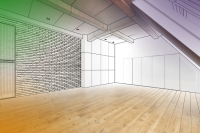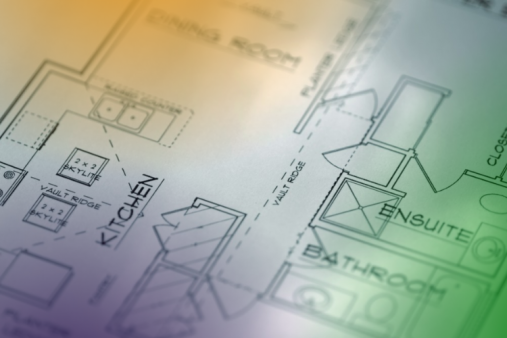Browse Loft Conversion Specialists locations
Find Local Loft Conversion Specialists Near You
Do you work in this trade? Are you a reliable and trustworthy trader looking to generate more work for your business?
Join us todayLoft Conversion Guide for UK Homeowners
Introduction to Loft Conversions
Why Consider a Loft Conversion?
So, you’re thinking about expanding your home without actually moving? A loft conversion might just be your golden ticket. For UK homeowners, it’s one of the smartest ways to add valuable living space without eating into your garden or outdoor area. Rather than investing in a costly extension or facing the stress of relocating, converting the unused attic space into a functional room can transform your home—and your lifestyle.
Why do people do it? The reasons vary. Some are growing their families and need extra bedrooms. Others are working from home and dream of a quiet office. Maybe you’re aiming for that luxurious master suite with a view. Whatever your motivation, a loft conversion offers a cost-effective and efficient solution.
It’s not just about adding space; it’s about enhancing your home’s potential. With house prices rising and the cost of moving escalating, making the most of what you already have is more appealing than ever. Think of your loft as a blank canvas. It’s an opportunity to design something entirely new—be it a cozy guest room, a serene reading nook, or even a chic studio apartment.
Moreover, a well-designed loft conversion can significantly boost your home’s market value. Estate agents often report that properties with a high-quality loft conversion command a premium on the market. So in essence, you're not just creating space—you’re making an investment.
Still on the fence? Just imagine stepping into a newly renovated, light-filled attic retreat instead of staring at dusty old boxes and insulation. Sounds like a win, right?
Popularity and Benefits in the UK
Loft conversions aren’t just a trend—they’re a nationwide movement. In cities like London, Birmingham, and Manchester where space is tight and land prices are sky-high, homeowners have started looking upward. And let’s be honest, the traditional UK home often comes with an underused attic that’s ripe for transformation.
One of the main drivers of this trend is the UK’s housing shortage. With limited space to build outwards, converting existing areas is a logical step. Plus, with more people embracing hybrid or fully remote work, the demand for home offices has skyrocketed. The loft provides a perfect solution—quiet, removed from the main bustle of the house, and brimming with potential.
Beyond space and value, loft conversions bring real lifestyle benefits. Imagine having an ensuite master bedroom with panoramic skylight views of your neighborhood. Or giving your teenager their own private domain. A well-designed loft can even serve as an income-generating Airbnb rental, especially if it has its own entrance and bathroom.
There’s also the flexibility factor. You can tailor the space to your exact needs and style preferences. Whether you're after a rustic retreat with exposed beams or a sleek, modern aesthetic, the possibilities are endless.
In summary, loft conversions in the UK are more than just a space solution—they're a lifestyle upgrade that can offer long-term financial and personal rewards.
Types of Loft Conversions
Dormer Loft Conversion
The dormer loft conversion is probably the most popular and versatile option in the UK. Why? Because it works on most home types, offers a significant amount of additional space, and is generally straightforward to construct.
A dormer conversion involves extending the existing roof to create a box-like structure that juts out from the slope. This structure typically houses vertical windows and walls, which means you’re not dealing with sloping ceilings that eat into headroom. That’s a big win if you’re planning to use the space as a full-sized bedroom or office.
The beauty of dormer conversions is in their practicality. They’re usually built under permitted development rights, meaning you won’t need full planning permission as long as you stay within certain limits. However, always double-check with your local planning authority to be safe.
There are a few different types of dormers—flat roof, shed, gable-fronted, and hipped. Each has its pros and cons, but the flat roof dormer is the most common because it provides maximum internal space.
Another great perk is that dormer conversions often allow for standard windows instead of roof lights, which improves both natural lighting and ventilation. Plus, you can even include a Juliet balcony if the structure faces your garden, adding a splash of luxury to your loft space.
While they can look boxy if not designed thoughtfully, a skilled architect can integrate the dormer seamlessly with your home's existing aesthetics. Costs vary, but you’re typically looking at £30,000 to £60,000 depending on the size and finish.
Dormers are a practical and affordable way to add space and value without drastically altering the overall shape of your roof. They're especially ideal for terraced and semi-detached homes.
Hip to Gable Loft Conversion
If you live in a semi-detached or end-of-terrace house with a sloping “hipped” roof, you might want to consider a hip to gable loft conversion. This style involves extending the sloping side of your roof outward to create a vertical gable wall. The result? More headroom and usable floor space.
This type of conversion is particularly popular because it’s less intrusive from the front and creates a symmetrical look. It opens up a lot of options for the internal layout, making it ideal if you’re planning a large bedroom with an ensuite or multiple smaller rooms.
Like dormers, hip to gable conversions can often be carried out under permitted development rights. However, the rules can vary by region, especially if you're in a conservation area or your property is listed. Always consult with your local planning office before starting.
Visually, this style of loft conversion blends well with your existing structure, especially when done with matching materials. It’s also a great base for a combined hip-to-gable plus rear dormer conversion, which gives you the best of both worlds—more space and more light.
Costs tend to range between £40,000 to £65,000 depending on the complexity and the materials used. While it’s a bit pricier than a standard dormer, the additional floor area and improved layout flexibility often make it worth the investment.
If you’ve got a hipped roof, don’t let it limit your potential. A hip to gable conversion can transform that sloping space into a functional, stylish new level of your home.
Mansard Loft Conversion
Now let’s talk about the big one—mansard loft conversions. These are usually the most dramatic (and expensive) type of conversion you can go for, but they also offer the greatest return in terms of usable space. Think of this as the penthouse of loft conversions.
A mansard conversion involves altering the entire slope of your roof. One wall of the loft is raised vertically, and the roof is flattened at the top, creating a nearly vertical back wall with dormer-style windows. The result? A full additional floor with standard ceiling heights, ample light, and loads of design potential.
This type of conversion is most common in densely populated urban areas like central London, where homeowners are desperate for more living space but can’t expand outward. It’s especially ideal for Victorian and Georgian terraced homes, which were built with a traditional pitch that lends itself well to the mansard style.
However, this level of transformation comes with a few caveats. First, you’ll almost always need planning permission. Because mansards significantly alter the shape and height of your roof, they fall outside permitted development rights. Second, the build time is longer—usually 8 to 12 weeks minimum—and the costs start around £50,000 and can exceed £80,000 depending on the scope.
But here’s the upside: you’re essentially adding an entire new storey to your house. Whether you turn it into a luxurious master suite, an income-producing flat, or an entertainment hub, the possibilities are endless.
If you’ve got the budget and your local council gives you the green light, a mansard conversion is hands-down one of the most transformative renovations you can do to your home.
Roof Light/Velux Loft Conversion
Looking for the simplest, fastest, and most cost-effective way to convert your loft? Enter the roof light loft conversion—also known as a Velux conversion. This method doesn’t require any external structural changes. Instead, it involves installing roof lights (Velux windows) into the existing slope of the roof to bring in natural light and fresh air.
Because you’re not extending the roof or altering the structure, this type of conversion typically falls within permitted development rights. That means no planning permission headaches in most cases. Plus, the construction time is significantly shorter—many projects wrap up in just 4 to 6 weeks.
But keep in mind, you’ll only get as much space as your current roof allows. If the pitch is steep and the loft is tall, you’re in luck. If not, you may find the headroom restrictive, especially around the edges of the room. In those cases, the space may be more suitable as a small office, guest bedroom, or playroom rather than a full-time living area.
Cost-wise, this is your most budget-friendly option. A basic roof light conversion can start as low as £20,000, depending on your needs and finishes. That makes it ideal for homeowners looking to add functionality without breaking the bank.
Velux windows also come with a range of high-tech options—like solar-powered blinds and rain sensors—that make them both practical and energy-efficient. And since you’re working within the existing roofline, the external appearance of your home remains virtually unchanged.
Bottom line? If you’re tight on budget or just want to make your loft usable without a full-scale renovation, a roof light conversion offers excellent value and minimal disruption.
Planning Permission and Building Regulations
When You Need Planning Permission
Let’s clear up one of the biggest myths in loft conversions: you don’t always need planning permission—but sometimes, you absolutely do.
In the UK, most loft conversions fall under “permitted development rights,” which means you can go ahead without applying for formal planning consent. But, there are specific conditions your project must meet. For example, your conversion must:
-
Not exceed 40 cubic metres (for terraced houses) or 50 cubic metres (for detached and semi-detached homes)
-
Not extend beyond the plane of the existing roof slope at the front of the house
-
Be made with materials similar in appearance to the existing house
-
Not include a balcony, veranda, or raised platform
-
Not be in a conservation area or affect a listed building
The moment your plans step outside those guidelines—say you want a large dormer that changes the roof’s shape or you’re living in a protected zone—you’ll need to apply for planning permission.
Don’t panic though. Most applications are approved, especially if your plans are reasonable and well-designed. Just be aware that the process can take 8 to 12 weeks, so factor that into your timeline.
Our advice? Always speak to your local council or hire a planning consultant before starting. The last thing you want is to invest in drawings and structural work only to be told your plans are non-compliant.
Understanding Permitted Development Rights
Permitted development (PD) rights are a homeowner’s best friend when it comes to avoiding planning red tape. These rights allow you to improve or extend your home without having to go through the full planning process. Sounds great, right? But there are still rules and limits.
As it applies to loft conversions, your project must remain within specific criteria—such as size limits, location on the property, and lack of impact on neighbours or protected areas. You also must:
-
Use similar building materials to the original structure
-
Ensure any side-facing windows are obscure-glazed and don’t open below 1.7m from the floor
-
Keep the conversion under the existing roofline if no dormer is added
And even though you’re not submitting a full planning application, it’s a smart move to apply for a Lawful Development Certificate from your local planning authority. This document confirms that your loft conversion complies with PD rights and can be crucial when selling your property later.
It’s also important to note that flats, maisonettes, and converted buildings typically don’t benefit from PD rights, so if you fall into one of those categories, you’ll need full planning permission regardless.
Key Building Regulations to Follow
Even if you don’t need planning permission, you will need to comply with building regulations. These are legal standards that ensure your conversion is safe, energy-efficient, and structurally sound.
Your local authority’s building control department or a private building inspector will need to sign off on several elements, including:
-
Structural safety: Ensuring your loft floor can support the added weight
-
Fire safety: Installing proper escape routes, smoke alarms, and fire doors
-
Insulation and energy efficiency: Making sure the space is well insulated
-
Staircase and access: Fitting a permanent, code-compliant staircase
-
Ventilation and drainage: Ensuring fresh air flow and proper plumbing for any bathrooms
A typical conversion is inspected at various stages—from the initial structural work to the final fit-out—and you’ll receive a completion certificate once everything’s been approved.
Failing to comply with building regulations can result in hefty fines, problems selling your home, or even being forced to reverse the work. So don’t cut corners—always build to code.
Cost of a Loft Conversion
Factors That Affect the Cost
Trying to pin down the cost of a loft conversion is like asking how long a piece of string is—it really depends. But understanding what drives the price can help you plan and budget wisely.
First, the type of conversion has a huge impact. As we discussed earlier, a simple Velux (roof light) conversion might start around £20,000, while a more complex mansard conversion can exceed £80,000. The bigger the structural changes, the higher the price tag.
Next, think about your roof structure. Traditional cut roofs (common in older properties) are generally easier and cheaper to convert. Truss roofs (typical in post-1960s homes), however, often need reinforcing or restructuring to make them suitable for a conversion, which can add thousands to your bill.
Access and staircase design can also push costs up. A compact staircase squeezed into an awkward corner costs less than a grand, custom-built staircase placed centrally in the house. But that doesn’t mean you should skimp—good design here improves the flow and usability of the entire floor.
Then there’s insulation, plumbing, electrics, and finishes. Want underfloor heating, recessed lighting, built-in storage, or high-end fixtures? Great—but expect to pay for it. Bathrooms and kitchens in a loft add complexity due to the need for plumbing, ventilation, and drainage systems.
Don't forget location—not just geographically but where your house is situated. Builders in London and the South East tend to charge more than those in other parts of the UK. Urban properties may also incur access challenges or parking costs.
And finally, factor in professional fees. Architects, structural engineers, planning consultants, and building inspectors all take their share. These can range from 10–15% of your total project cost.
Knowing these cost factors ahead of time helps you budget with open eyes—and avoid that dreaded “how did it get this expensive?” moment halfway through your build.
Average Costs by Conversion Type
Let’s break it down with a quick overview of what you can expect to spend based on the type of conversion you’re planning:
| Type of Loft Conversion | Average Cost Range (£) |
|---|---|
| Roof Light (Velux) | £20,000 – £30,000 |
| Dormer | £30,000 – £60,000 |
| Hip to Gable | £40,000 – £65,000 |
| Mansard | £50,000 – £80,000+ |
| Modular Loft (Prefab Install) | £55,000 – £75,000 |
These are rough averages and will vary depending on the size of your property, the quality of finishes, and regional pricing differences.
Also keep in mind that if you plan to include a bathroom or kitchenette, plumbing and electrical works could add another £5,000–£15,000 to your overall budget.
Budgeting Tips for Homeowners
Sticking to a loft conversion budget isn’t just about being frugal—it’s about being smart. Here are some tried-and-true tips to keep your costs in check:
-
Get multiple quotes: Always compare at least 3 detailed quotes from reputable builders. Don’t just go with the cheapest—look at what’s included.
-
Allow for contingencies: Set aside at least 10–15% of your budget for unexpected costs. Rotten timbers, old electrics, or tricky access can throw a spanner in the works.
-
Prioritise your must-haves: Start with what’s essential. You can always upgrade fixtures and finishes later if you run over budget.
-
Choose a design-and-build company: These firms handle everything from drawings to construction, which can help streamline communication and reduce unexpected changes.
-
Plan ahead: Making changes mid-project can be expensive. Nail down your design before the build starts and try to stick with it.
-
Reuse materials: Salvaging existing timber, bricks, or even old furniture can save money and add character.
-
Consider phased development: If your budget is tight, build the shell first and finish the interior later. That way, you’ve laid the groundwork without overextending financially.
Budgeting might not be the most exciting part of your loft conversion journey—but it’s definitely one of the most important.
Designing Your Loft Conversion
Choosing the Right Layout
Designing your loft space is where the magic happens. It’s not just about stuffing a bed into an attic—it’s about creating a functional, beautiful space that works for your lifestyle. And the first step? Getting the layout right.
Start by identifying your goals. Do you want a bedroom? A home office? A multi-purpose room? Once you’ve got that nailed down, you can begin to shape the layout to suit.
If you’re adding a bedroom and ensuite, position the bathroom on the same side of the house as existing plumbing lines—usually above the current bathroom or kitchen. This will save money on pipework and improve water pressure. Consider wall placement too: you’ll want privacy between rooms, especially if you’re including a shared landing.
If the loft is to be a workspace or studio, think about light and acoustics. Maximise natural light by placing your desk or working area near roof windows or dormers. Add built-in shelves or clever storage nooks in the lower-slope areas to make every inch count.
For multi-use spaces, like a guest room that doubles as a playroom, think flexible design. A fold-out bed, modular furniture, and integrated storage can help you switch up the room’s function with ease.
Ceiling height is another crucial element. You need at least 2.2 metres of head height over 50% of the floor area to make the space comfortable. Anything less can make the room feel cramped. Dormers or mansards are great solutions to improve this.
Lastly, don’t forget circulation space—especially around staircases, doors, and storage. A beautifully designed loft needs to be just as easy to move around in as any other room in your house.
In short: good layout = good living.
Maximising Space and Light
Space and light can make or break a loft conversion. Since attics naturally come with sloped ceilings and awkward corners, it’s crucial to get clever with how you use every square inch—and how you let light flood in.
Let’s start with the light. Roof windows (like Velux) are an obvious go-to. They’re cost-effective, easy to install, and allow daylight to pour in from above. Place them on both sides of the roof if possible for a balanced, natural brightness throughout the day. Want a more open feel? Dormers not only create headroom but also bring in wider windows.
Another game-changer? Glass elements. Glazed partitions, internal windows, or even a Juliet balcony can make the space feel expansive. Use light-reflective surfaces—like mirrors, gloss finishes, or light-colored paint—to bounce light around and create the illusion of more room.
Now for space-maximising strategies. Built-in storage is your best friend. Use the lower areas under the eaves for cupboards, drawers, or shelving. These spots are often too low for walking space but perfect for hiding clutter. Bespoke wardrobes and fitted furniture work wonders here.
You should also think vertical. Tall, slim storage units, bookcases, or gallery walls help draw the eye upwards and make the ceiling feel higher than it is.
And don’t overlook multi-functional furniture—sofas that turn into beds, foldable desks, and ottomans with hidden compartments are perfect for making a compact loft feel like a suite.
Lastly, keep the floor plan open and uncluttered. Too many walls or oversized furniture pieces can make a small loft feel like a cave. Use rugs, lighting, or sliding doors to define zones without sacrificing flow or light.
Staircase Design and Placement
The staircase is one of the most crucial—and often trickiest—parts of a loft conversion. Get it wrong, and you lose valuable space on the lower floors. Get it right, and it feels like your new room was always meant to be there.
First things first: building regulations require that the staircase to your loft must be permanent and safe—not a ladder or pull-down steps. It must also lead to a fire-escape route, especially if your loft will become a bedroom.
When choosing a location, it’s usually best to place the staircase above the existing stairs if you can. This keeps the flow of the house natural and avoids awkward dead zones. However, if that’s not possible, it may need to go through a bedroom, hallway, or even land in an open-plan kitchen below—depending on your floorplan.
You’ve got several staircase styles to consider:
-
Straight stairs are simple and space-efficient but need a fair amount of floor area.
-
Spiral staircases are stylish and compact but not always the easiest to climb—especially with kids or heavy furniture.
-
L-shaped or winder stairs work well in tight spots and can add an architectural feature to your home.
Material choice can influence the feel and cost. Timber is traditional and warm, while steel and glass give a contemporary look and can help keep things feeling open and airy.
Lighting is key, too. If the staircase is enclosed or tucked away, consider adding recessed lights or skylights above to keep the area inviting and safe.
Ultimately, your staircase should feel like a natural part of the home—not an afterthought. Done right, it becomes a visual anchor and a practical asset.
Finding the Right Loft Conversion Specialist
What to Look for in a Loft Conversion Company
Choosing the right team to handle your loft conversion can make or break your entire experience. You’re trusting them with your home, your money, and your vision—so take your time to get it right.
Start by looking for experience and specialization. You don’t want a general builder who’s “done a few lofts”—you want a company that does this day in, day out. They’ll know the ins and outs of structural safety, planning laws, and design details that make lofts liveable.
Next, ask about their qualifications and accreditations. Are they members of the Federation of Master Builders (FMB) or National Association of Building Contractors (NABC)? Do they have NICEIC-approved electricians or Gas Safe engineers on the team?
Check if they offer a design-and-build service. This can save you time and hassle by keeping everything under one roof—from architectural drawings to final fittings.
And always, always ask to see a portfolio of past work. Look for similar homes to yours and see how they handled the space. A good builder should be proud to show off their projects—and put you in touch with past clients for references.
Lastly, consider their communication skills. Do they return calls promptly? Are they open and transparent about costs and timelines? You’re going to be working closely with these people, so make sure they’re not just skilled—but also trustworthy and professional.
Conclusion
There you have it—a complete, step-by-step guide to loft conversions for UK homeowners. Whether you’re dreaming of a new master suite, an office with a view, or just a smart investment to add value to your property, a loft conversion offers a versatile and cost-effective solution.
From planning permission to staircase design, from budget hacks to choosing the right conversion type, this guide has walked you through everything you need to know before getting started. Yes, it’s a big project. Yes, there are rules, costs, and choices to make. But with the right planning and professionals by your side, it’s also one of the most rewarding home improvements you can take on.
So go on—look up. Your attic has been waiting for a glow-up, and now you’ve got the knowledge to make it happen.
FAQs
How long does a typical loft conversion take?
On average, a loft conversion takes 6–12 weeks, depending on the type and complexity. Velux conversions are quickest, while mansards and complex dormers can take longer.
Can I convert my loft if I live in a conservation area?
Yes, but you’ll likely need planning permission, and your options may be more limited. Always consult with your local planning authority first.
What’s the difference between planning permission and building regulations?
Planning permission deals with how your loft affects the exterior of your home and the neighbourhood. Building regulations ensure your conversion is structurally sound, fire-safe, and energy-efficient.
How can I ensure my loft conversion is eco-friendly?
Use eco-insulation, double or triple-glazed windows, LED lighting, and energy-efficient heating systems. Sustainable materials and smart ventilation also help.
Is it possible to do a loft conversion in a bungalow?
Absolutely. In fact, bungalows are perfect candidates for loft conversions and often benefit from large roof spaces and simpler structural designs.
Past Projects
A small example of past local projects
Full loft conversion needed on a bungalow
Need loft conversion in bungalow
Maryport, CA15
Loft conversion quotes invited asap
Would like quotes for loft conversion
Wolverhampton, WV4
Loft Conversion quote wanted
Would like a quote for loft conversion
Northampton, NN5
Quote for a loft conversion please
Would like a loft conversion
Diss, IP22
Dormer and gable end loft conversion
Quote for loft conversion
Poole, BH12
Loft conversion specialists
Loft conversion
Ferndown, BH22
Loft conversion specialists
Loft conversion please
Nottingham, NG13
LOFT CONVERSION SPECIALISTS
New loft conversion
Bracknell, RG42
2 bed loft conversion - Holywell
Loft conversion with two bedrooms
Holywell, CH8
Loft conversion needed
Loft conversion adding two bedrooms and a possible shower room
Selby, YO8
Popular Cities
- Argyll and Bute
- Bath
- Birmingham
- Bradford
- Brighton and Hove
- Bristol
- Canterbury
- Cardiff
- Chelmsford
- Chester
- Coventry
- Derby
- Dunfermline
- Durham
- Edinburgh
- Falkirk
- Glasgow
- Gloucester
- Leeds
- Leicester
- Lincoln
- Liverpool
- London
- Manchester
- Newcastle Upon Tyne
- Newport
- Nottingham
- Portsmouth
- Sheffield
- Southampton
- Southend On Sea
- Stirling
- Sunderland
- Wakefield
- Wells
- Wolverhampton






